Suspension training is popular amongst the military and army personnel in that it is portable, takes up very little space, and allows you to train every muscle group in a challenging fashion anywhere. While it is a form of body weight training, you can manipulate the resistance placed on the working muscles by how you position yourself relative to the anchor point.
Suspension training is very beneficial for:
1) Joint stabilization
2) Total body work
3) Core engagement
4) Improves cardiorespiratory fitness through utilizing oxygen in the workout
5) Stabilization and balance training
According to Dr Slava Shut of Back2HealthPT in West Hollywood, “Suspension training is excellent for athletes and for individuals who are looking to work on proprioception, stability and balance. It is recommended that you approach your suspension training program slowly as to emphasize your stabilization with optimal alignment. This will enhance strength and balance while decrease the risk of injury.”
Hit the whole body from head to toe in these moves below. Do 3 sets of 12-15 reps of each in a superset sequence as to keep the heart rate up. To those unaware, super-setting is doing one exercise after the next without breaks. However, if you need a break, listen to your body and take one. Simply be mindful of how long you break for, using a watch so that you can stay true to working out at your highest capacity. So you will do all 5 exercises before moving onto set #2 and 3 respectively.
1) Squat to Row:
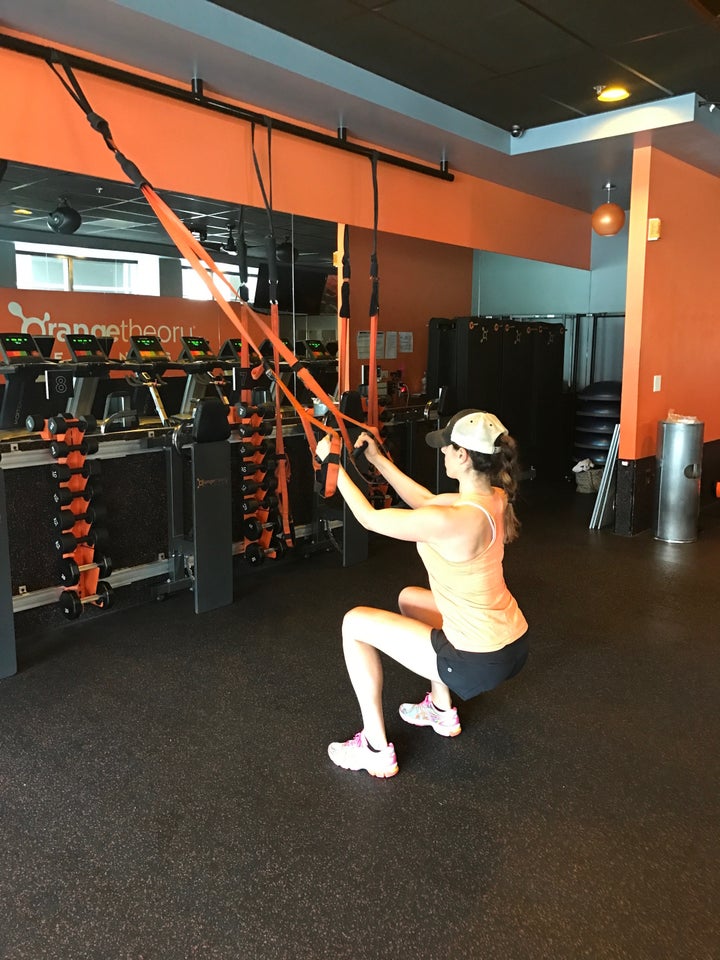
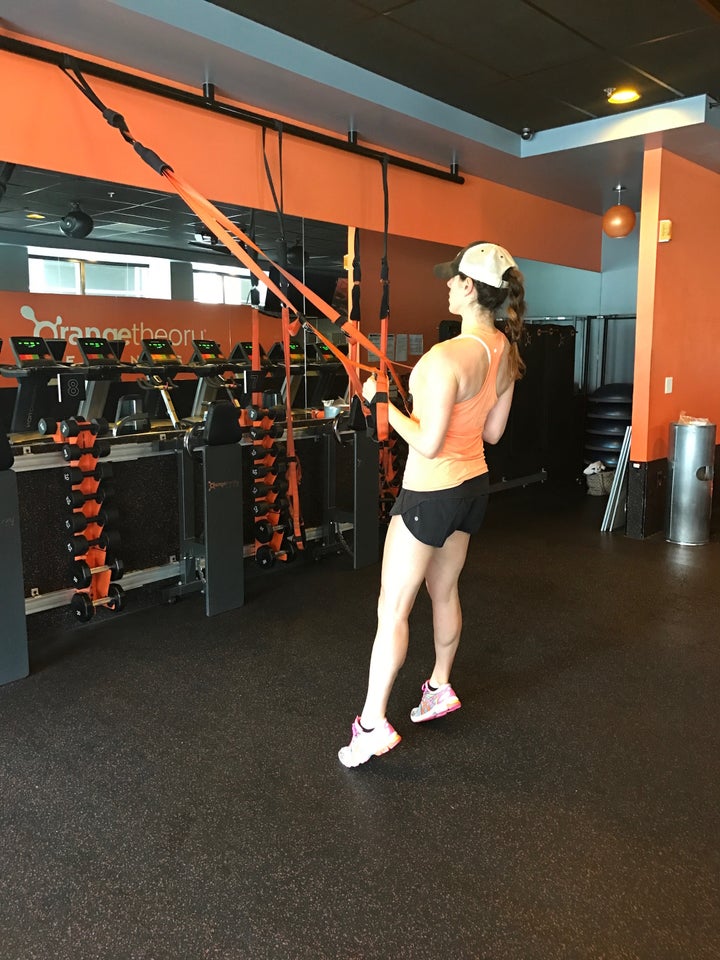
Start with this exercise as it is bilateral (both sides working) and allows your body to familiarize with suspension training. Start with your feet hip distanced apart with your toes facing forward. Come close enough to the anchor of the suspension system and start with your arms close to your side body. Palms will face in towards each other. Slowly descend down with your knees at a 90 degree angle, keeping your back straight. Do not squat lower. Pause at the bottom for one count, then drive up through your heels to a standing position with your arms pulled into your side body. For a challenge, come up into a calf raise. Do your best not to use your arms to stand up. Use your legs and allow your arms to be the last part of the rep.
2) Pushups:
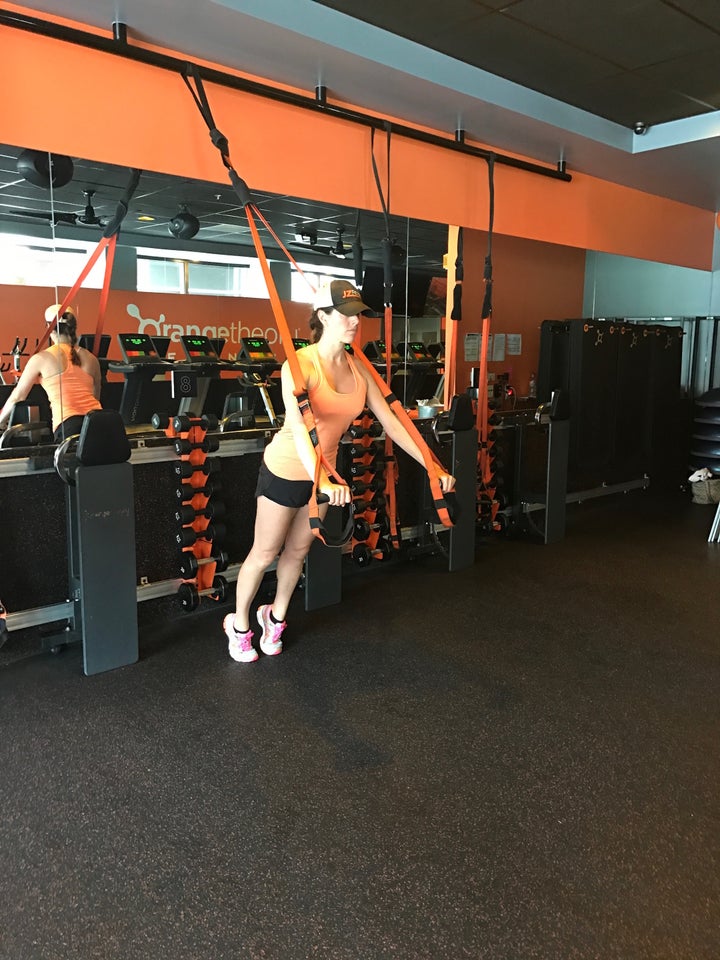
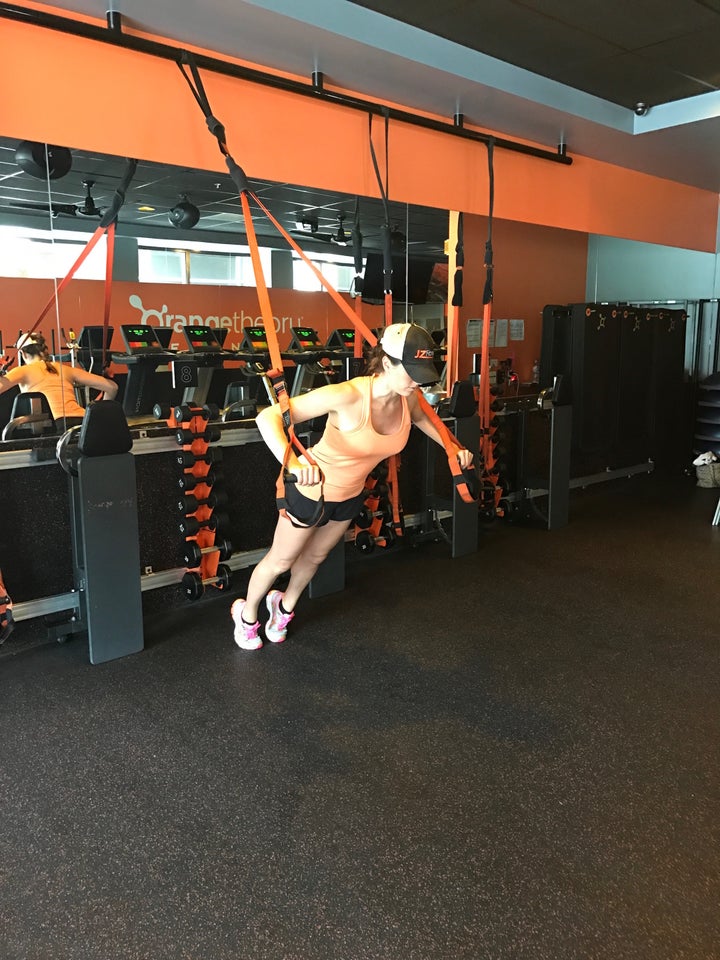
Set yourself up with your hands facing down and your feet together or hip distanced apart (for more balance). The further towards the wall you walk your feet, the more challenging the pushup, vs stepping away from the wall. Always keep tension on the straps. Set your body up with your anchor points being your feet, under your hips, which are under your shoulders. Align your ears with your shoulders and keep your eyes downward. Keep your arms below shoulder height. Initiate the pushup and only come down to a 90 degree angle in the elbows, no more. Then exhale and push yourself back up. You always have the option to do a one leg balance challenge which creates a heavy demand on your ability to stabilize.
3) Pistol Squat to Back Lunge:
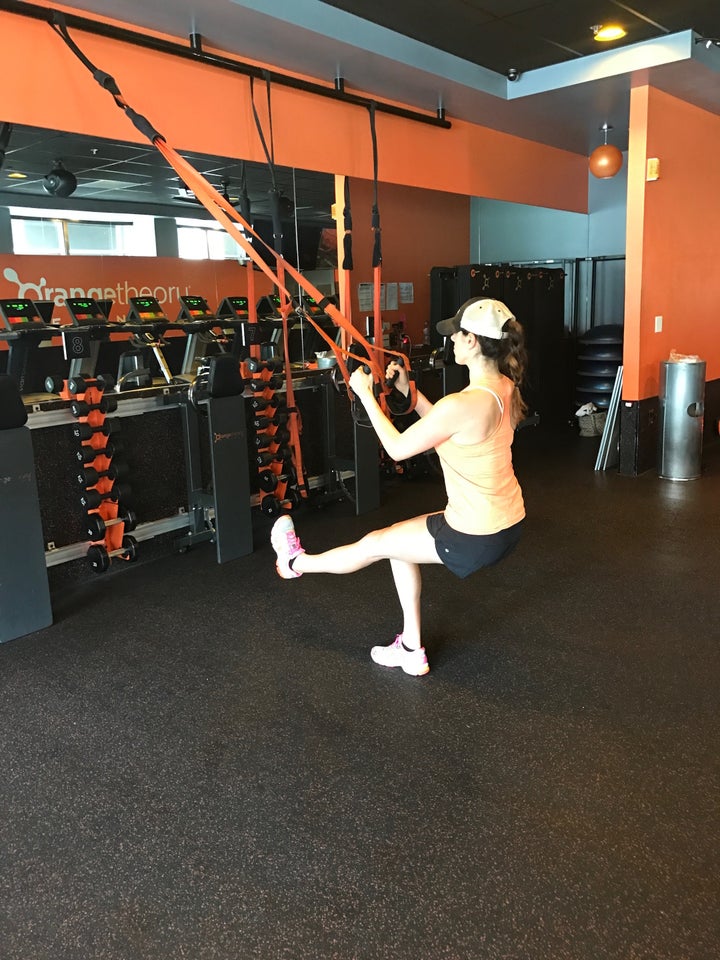
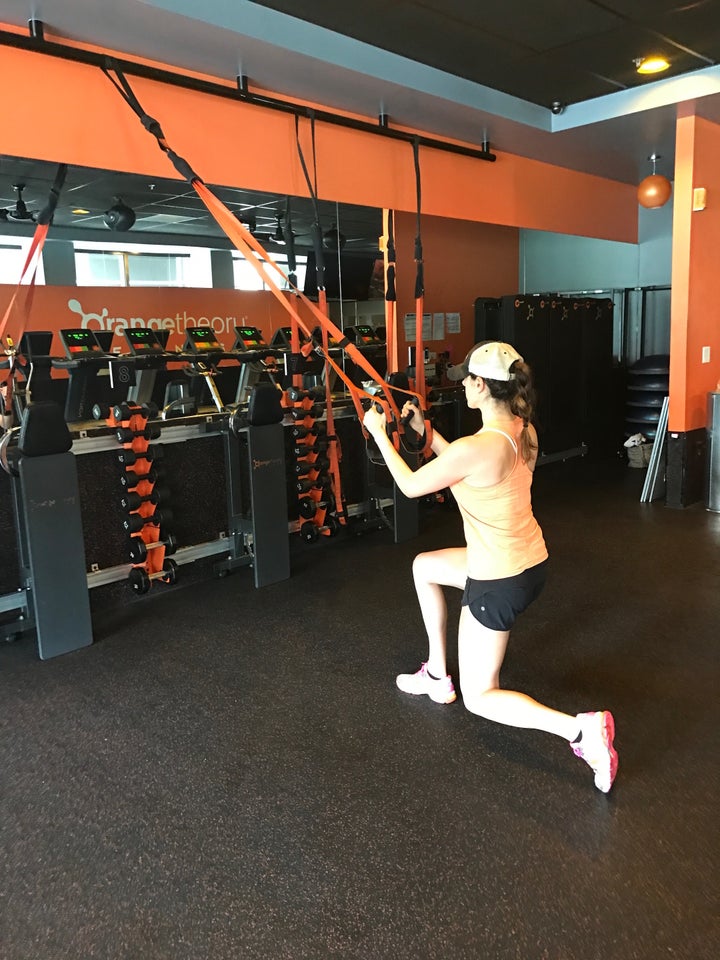
Holding the handles firmly in both hands, your palms facing in, bring your legs together and connect the knees. While keeping the pelvis neutral (not tipping to the side) slowly extend one leg forward while the other stabilizes while you do the single leg pistol squat. Drive through the standing leg to slowly transition the foot back to a back lunge, while keeping the front knee over the heel. Keep a neutral spine as you lower into the exercise as well as through the transitions. Your arms should only be used for balance, not as if to be holding on for life. Relax your shoulders and breathe gently.
4) High to Low Row:
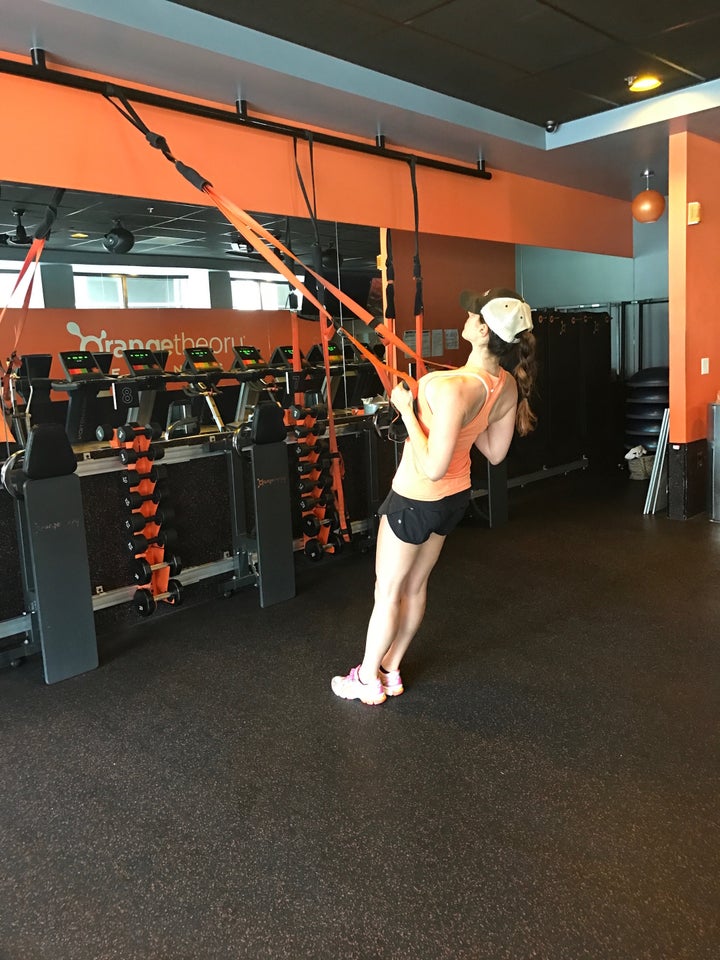
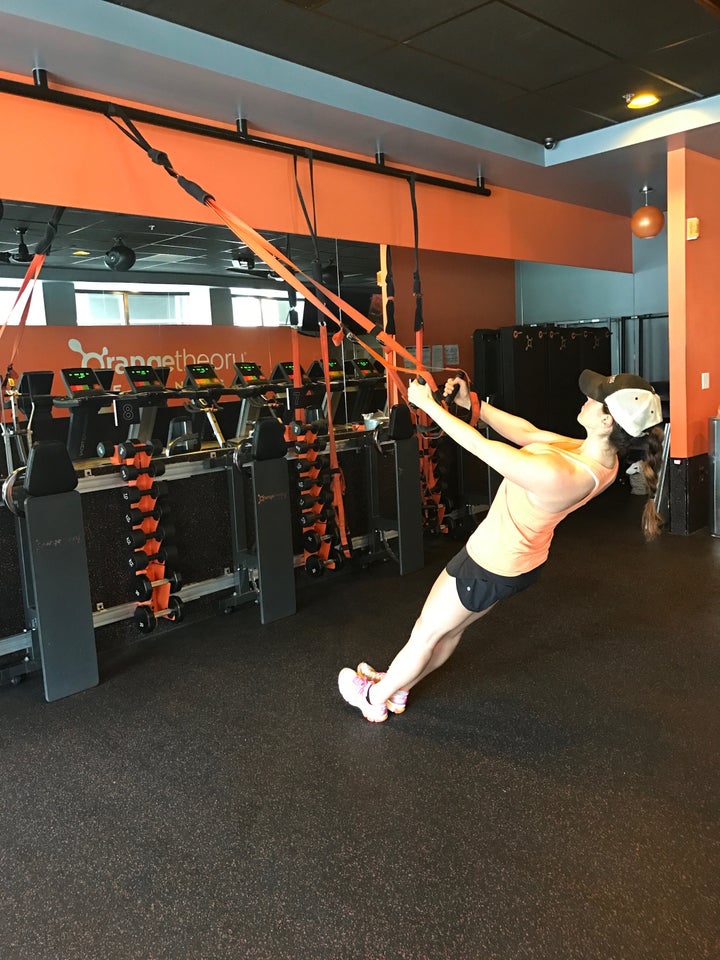
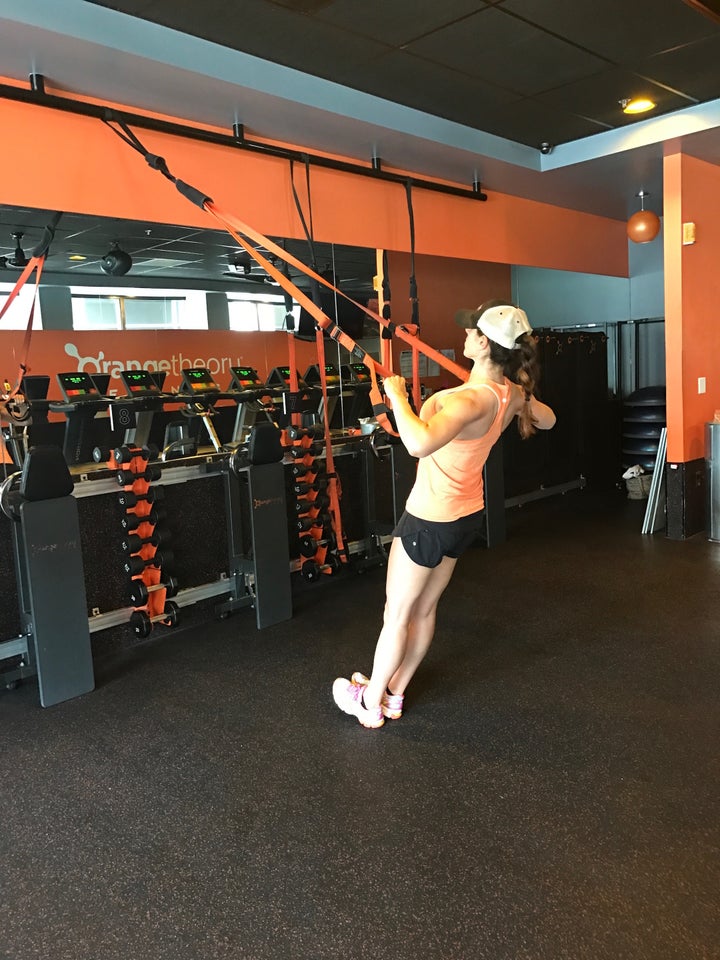
Holding the handles, step yourself back enough to create a straight line in your body from the crown of your head through the shoulders, hips and heels. Have your palms facing in, and with control, lower down where you extend your arms straight out in front of you below shoulder height. As you exhale bring yourself to a low row squeezing your shoulder blades together at the top of the exercise. Pause for a count. Then exhale and bring your arms out to the side as if you were riding a motor cycle with your palms facing down, and your hands slightly below shoulder height. Squeeze your shoulder blades together at the top.
5) Mountain Climbers:


Climb onto your knees and place your feet into the black foot straps of the suspension system. Gently walk your hands forward as your feet are supported by the foot cradle and only walk a few inches forward to create enough tension in the straps, but also enough room to mountain climb your legs in towards your triceps. This is a tremendous core workout and requires balance and stability. Make sure your shoulders are relaxed away from your ears and that your core is truly braced. Breathe through each rep by driving your leg forward and up towards your chest and alternate between sides, while keeping good alignment and stability through the rest of your body. For whatever reason you cannot do this exercise, simply take yourself to the floor and progress up to the straps in time.
Photo and video credits: Dana Matzkin, CPT
